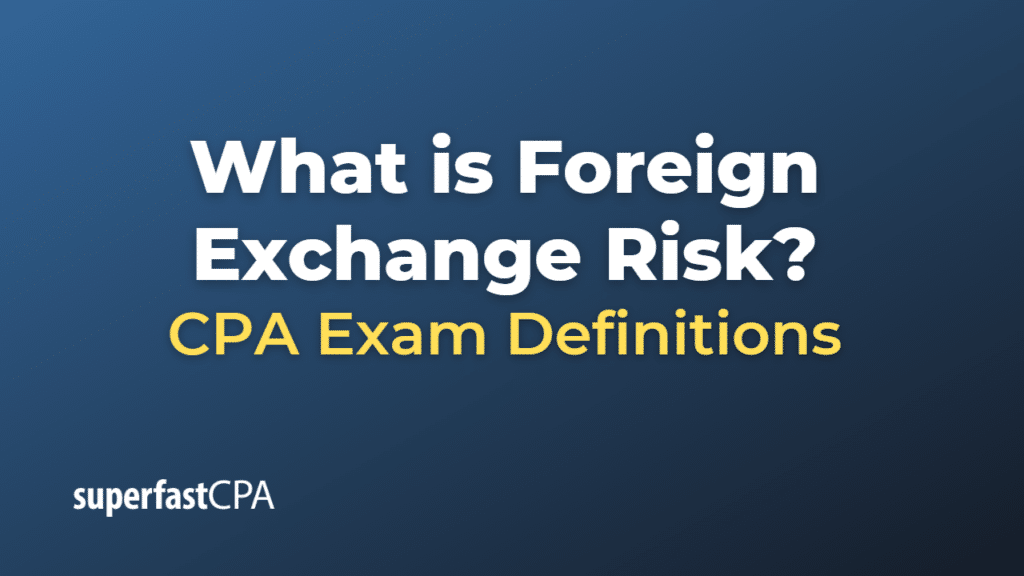Foreign Exchange Risk
Foreign exchange risk, also known as currency risk or exchange rate risk, arises from the change in price of one currency relative to another. This risk can affect businesses, investors, and even individuals who make transactions in a foreign currency, hold foreign investments or operate businesses in foreign countries.
Companies that conduct business internationally are exposed to foreign exchange risk in their day-to-day operations when they buy goods or services from foreign suppliers (payables) or sell goods or services to foreign customers (receivables) in a currency other than their functional currency. Similarly, individuals and investors who own investments denominated in foreign currencies are subject to foreign exchange risk because the value of those investments may change due to fluctuating exchange rates.
Foreign exchange risk can be categorized into three types:
- Transaction Risk: This refers to the risk that a company’s financial performance or the value of its financial instruments will be affected due to changes in exchange rates between the agreement and settlement of a transaction.
- Translation Risk: This is the risk that a company’s reported earnings or balance sheet could be negatively affected during the consolidation process due to currency exchange rate fluctuations.
- Economic Risk : Also known as forecast risk, this involves changes in the expected future cash flows of a company due to unexpected currency fluctuations.
To manage foreign exchange risk, companies use various financial strategies and products, such as forward contracts, futures contracts, options, swaps, or even operational strategies like invoice currency selection or diversification of market presence.
Example of Foreign Exchange Risk
Imagine a U.S. based company, US Tech Inc., that signs a contract to sell software to a European customer for €500,000, with payment to be made three months from now. US Tech Inc. plans to use this revenue to fund its operations and new projects, and it budgets based on the current exchange rate of $1.20/€1, expecting to receive $600,000 (€500,000 * $1.20) in three months.
However, over the next three months, let’s assume that the U.S. dollar strengthens against the euro, and the exchange rate becomes $1.10/€1. Now, when US Tech Inc. receives the €500,000 from its customer and converts it to U.S. dollars, it only gets $550,000 (€500,000 * $1.10).
So, US Tech Inc. has essentially lost $50,000 due to the change in the exchange rate, which is the foreign exchange risk. This could significantly impact the company’s budget, profitability, and even its ability to carry out planned projects.
To manage this risk, US Tech Inc. could have used a foreign exchange forward contract to lock in the exchange rate at the time of the sale, ensuring it would receive the planned $600,000 regardless of how the actual exchange rate moved. This is one of the strategies companies use to hedge against foreign exchange risk.













